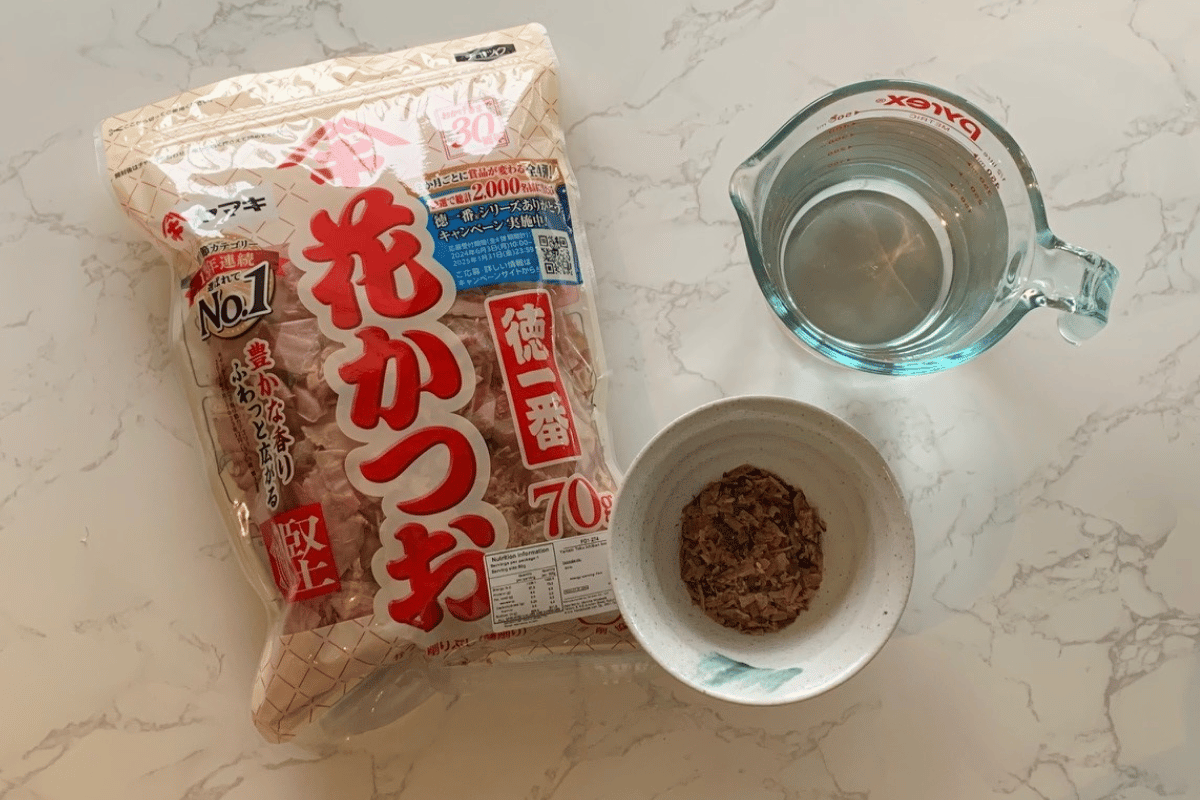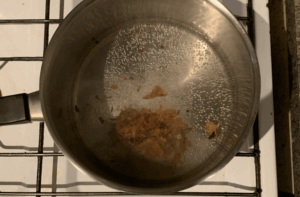How to Make Kasuo Dashi (Japanese Soup Stock)

🍲 Katsuo Dashi (Japanese soup stock.) : The Heart of Japanese Cooking
🏠 Introduction: What is Katsuo Dashi?
If you love Japanese food, there’s a good chance you’ve already tasted katsuo dashi — even if you didn’t know it!
Katsuo dashi (Japanese Soup Stock) is a simple yet essential broth made by simmering dried bonito flakes (called katsuobushi) in water. It forms the rich, savory base for many beloved dishes like miso soup, udon, soba broth, and simmered vegetables.
This flavorful broth captures the essence of umami — the deep, savory taste that makes Japanese cuisine so comforting and satisfying.
🐟 What is Katsuobushi?
Katsuobushi is made from skipjack tuna (katsuo in Japanese) that has been boiled, smoked, and dried into hard, wood-like blocks, then shaved into thin flakes.
The flavor is smoky, slightly fishy, and full of natural glutamates — the key to that rich umami flavor, making it perfect for Japanese soup stock.
Today, you can easily find pre-shaved katsuobushi flakes at Asian grocery stores or online, making homemade dashi very accessible.
🌿 Why You’ll Love Making Katsuo Dashi at Home
- Incredibly simple — only two ingredients!
- Ready in minutes — much faster than Western stocks
- Deep, clean flavor — lighter and more delicate than chicken or beef stock
- Versatile — perfect for soups, noodle broths, dipping sauces, and simmered dishes
- Pure and natural — no artificial additives
🛒 Ingredients
- 500 ml water (filtered if possible)
- 10–15 g (about 1 packed cup) katsuobushi flakes
Optional:
If you want a deeper flavor, you can start with kombu (dried kelp) as well, creating a kombu-katsuo dashi.

🍳 How to Make Katsuo Dashi
1. Heat the Water
Bring the water to just under a boil (around 85–90°C / 185–195°F). If you’re using kombu, add it while the water is still cold and remove it just before the water starts to simmer.

2. Add Katsuobushi Flakes
Once bubbles start forming, add the katsuobushi flakes. Let them simmer very gently for about 30 seconds to 1 minute, enhancing the Japanese soup stock.

3. Turn Off the Heat
Turn off the heat and let the flakes steep for another minute until they sink to the bottom.
4. Strain the Dashi
Strain the broth through a fine-mesh sieve or cheesecloth to remove the bonito flakes and achieve a clear Japanese soup stock.

5. Use Immediately
Fresh katsuo dashi is best used right away, but you can store it in the fridge for up to 2 days.

🔥 Quick Tip
💡 Don’t over-boil the bonito flakes!
Boiling too hard can make the dashi taste bitter and cloudy. Gentle simmering gives you a clean, beautifully clear broth.
🥢 How to Use Katsuo Dashi
Here are just a few classic ways to enjoy katsuo dashi, a crucial component in Japanese soup stock:
- Miso Soup – The foundation of classic miso soup with tofu and seaweed.
- Udon or Soba Broth – Combine with soy sauce and mirin for a noodle soup base.
- Chawanmushi – Silky Japanese savory egg custard.
- Oden – A warming simmered dish of fish cakes, daikon, and eggs.
- Dipping Sauce (Tsuyu) – For cold soba or tempura.
You can even add a splash of dashi to stir-fries or steamed vegetables for extra depth!
❓ Frequently Asked Questions
Can I reuse the bonito flakes?
You can make a second dashi (niban dashi) by simmering the used flakes again, but it will be lighter and less intense. It’s perfect for stews or braised dishes.
Is katsuo dashi fishy?
No — when made properly, it’s deeply savory with just a hint of smokiness, not overwhelmingly fishy.
Can I freeze dashi?
Yes! Freeze it in small portions (like ice cube trays) for easy use later.
🌸 Final Thoughts
Katsuo dashi is a small step that makes a huge difference in your cooking. It’s the soul of so many Japanese dishes — clean, savory, and comforting. Once you try making it yourself, you’ll see how easy and rewarding it is to build real Japanese flavors from scratch.
Happy cooking! 🍜✨

Katsuo Dashi (Bonito Soup Stock)
Ingredients
- 500 ml water
- 10 -15 grams katsuobushi (bonito flakes)
Instructions
- Heat water until just below boiling.

- Add bonito flakes and simmer gently for 30 seconds to 1 minute.

- Turn off the heat and let steep until flakes sink.
- Strain and use immediately.

